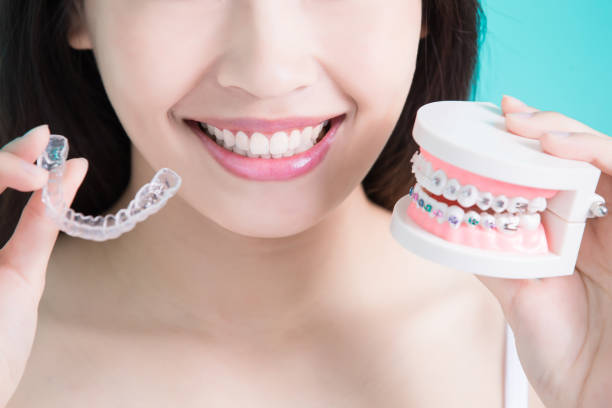
Understanding Malocclusion: Types, Causes, and Treatment Options
Malocclusion is a common dental condition that affects a large number of people worldwide. It refers to tooth misalignment and bite difficulties, which can affect both the functionality and attractiveness of a person’s smile. Understanding the various types, causes, and treatment options for malocclusion is critical to optimal dental health and an attractive, beautiful smile. This blog delves into these topics in depth, providing insights into how malocclusion can be properly handled.
What is Malocclusion?
Malocclusion refers to any deviation from the optimum alignment of the teeth and how the upper and lower teeth fit together. This misalignment can interfere with chewing, speaking, and keeping good dental hygiene. Furthermore, if left untreated, it can cause more serious dental issues such as tooth wear, gum disease, and jaw pain.
Types of Malocclusion
Malocclusion is usually divided into three groups based on the connection between the upper and lower teeth:
Class I malocclusion (neutrocclusion)
This is the most frequent form, with a generally normal bite but potential difficulties with teeth alignment and spacing. The molars align correctly in Class I malocclusion, while the other teeth may be crowded, spaced apart, or misaligned. Symptoms include crowded or spaced teeth, minor misalignment of teeth, and possible aesthetic issues.
Class II Malocclusion (Distocclusion)
Class II Malocclusion occurs when the lower molars are positioned further back than the upper molars. This causes an overbite, in which the upper front teeth greatly overlap the lower front teeth. Symptoms include a noticeable overbite, protruding upper teeth, and probable bite issues that hinder chewing and speaking.
Class III Malocclusion (Mesiocclusion)
This form of malocclusion is distinguished by the lower molars being positioned more forward than the upper molars, creating an underbite. The lower front teeth may expand beyond the higher front teeth. Symptoms include an underbite, projecting lower teeth, and potential issues with bite function and attractiveness.
Causes of Malocclusion
Malocclusion can be caused by a variety of factors, which are broadly classified as genetic and environmental causes:
Genetic Factors
- Inherited Traits: Many cases of malocclusion are passed down from family members. Genetic factors can affect the size and shape of the jaw and teeth, resulting in misalignment.
- Family History: If malocclusion or dental difficulties run in your family, you may be more likely to develop similar problems.
Environmental Factors
- Early Loss of Baby Teeth: The premature loss of baby teeth might disrupt the alignment of permanent teeth when they emerge.
- Thumb Sucking: Prolonged thumb sucking in childhood might alter tooth placement and jaw development.
- Mouth Breathing: Chronic mouth breathing caused by nasal congestion or other disorders might have an impact on tooth and jaw development.
- Dental trauma: Accidents or traumas to the teeth or jaw can result in malocclusion.
Other Factors
- Improper Dental Care: Poor oral hygiene and dental care can lead to problems with teeth alignment and malocclusion.
- Uneven Tooth Wear: Habits like bruxism (tooth grinding) can produce uneven wear on the teeth, resulting in misalignment over time.
Treatment Options for Malocclusion
The type and severity of malocclusion determine the appropriate treatment. There are several solutions available, ranging from orthodontic treatment to surgical operations. Here’s an outline of common treatments:
Orthodontic Treatments
- Braces: Traditional metal braces employ brackets and wires to gradually bring the teeth into appropriate alignment. They are useful in correcting a wide range of malocclusions, including crowding, spacing, and bite difficulties.
- Ceramic braces: These braces function similarly to metal braces, except the brackets are clear or tooth-coloured, making them less apparent.
- Invisalign: Invisalign uses a set of transparent, removable aligners to correct malocclusion. This treatment is less noticeable and more pleasant than regular braces.
- Retainers: After the initial orthodontic treatment, retainers are used to keep the teeth in the correct position and avoid relapse.
Surgical Treatments
- Orthognathic Surgery: If braces alone are ineffective in correcting severe malocclusion, orthognathic surgery can be considered. This operation repositions the jawbones to improve alignment and function.
- Tooth Extraction: In some circumstances, it may be necessary to withdraw specific teeth in order to create space and allow the remaining teeth to properly align.
Non-Invasive Therapies
- Dental Contouring: When modest modifications are required, dental contouring can modify the teeth to improve alignment and look.
- Veneers: Dental veneers are used to fix minor alignment faults and improve the overall appearance of the teeth.
Transform Your Smile with Neo Smiles: Singapore’s Leading Diamond Invisalign Provider
Neo Smiles is a top provider of Invisalign in Singapore. Unlike traditional braces, Invisalign in Singapore are almost invisible, making them a comfortable and flexible option for those looking to improve their smiles without the hassle of metal brackets and wires. Orthodontists in Singapore at Neo Smiles use innovative 3D imaging technology to tailor each treatment plan to specific dental concerns such as overcrowding, overjet, underbite, crossbite, open bite, and spacing. Patients can have a discrete and successful orthodontic experience that fits effortlessly into their regular life. Neo Smiles also provides various payment alternatives, making it easier for people to acquire their ideal smiles using Invisalign.